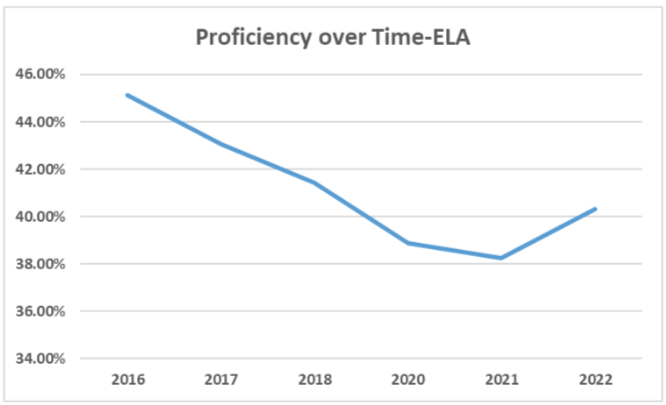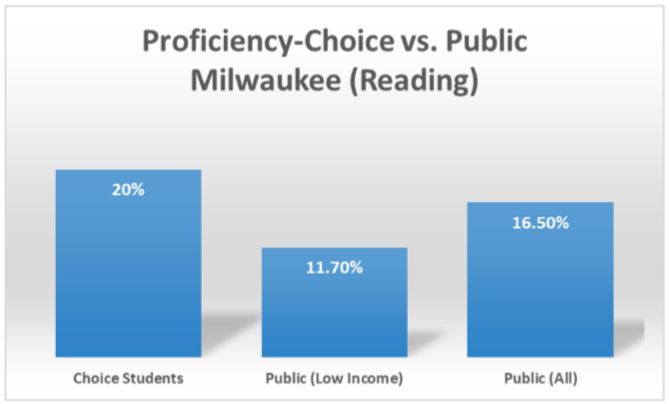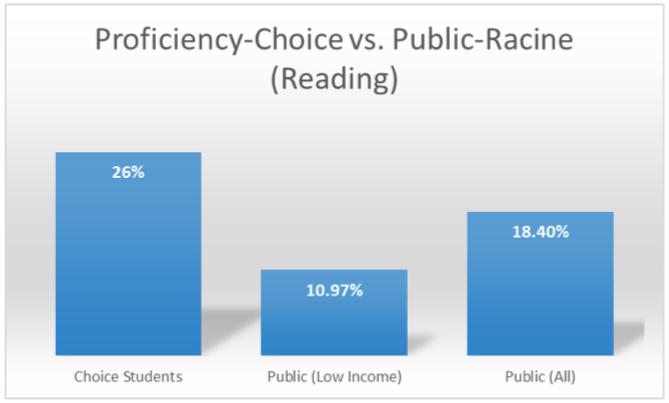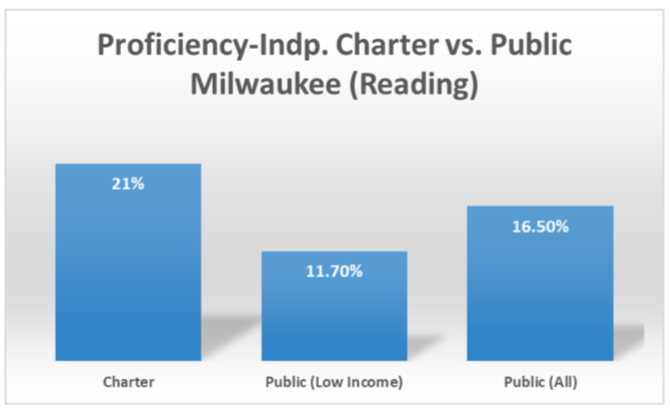Today, DPI released Forward Exam results for the 2022-23 school year. These results annually paint an important picture of what is happening in Wisconsin’s schools, and allow for comparisons of the performance of traditional public schools with our school choice options including private school choice and charter schools. While a deeper analysis will require the availability of the state report card for our annual Apples to Apples report, there is important information that can be garnered from this data.
Proficiency Remains Low, with Slight Rebound
While proficiency rates of less than 50% were a cause for concern prior to the pandemic, since then we have seen proficiency in math and reading fall below 40%. This year did see a slight rebound, but a big gap remains to even get back to where we were in 2016. The chart below depicts proficiency in English/Language Arts (ELA) over this time frame.

From a high of nearly 45% in 2016, proficiency fell into the 30s by 2021 (note 2019-20 is missing due to COVID). The slight increase this year to about 42% among test takers still means that proficiency remains 4% worse than 2016. The same trend exists in math. After years of declines bottoming out in 2020-21, math scores have come up slightly—but only to about 41% proficiency. We should not be satisfied with proficiency rates in the low 40s, even if that does represent a modest improvement.
Choice Schools Continue to Outperform
While proficiency rates in Milwaukee and Racine remain below what we should strive for across all sectors, it is important to highlight that, once again, schools in the choice program are outperforming their traditional public-school peers. The chart below show proficiency in Milwaukee in ELA across three contexts—students in the choice program, all public-school students, and low-income public-school students. Across both comparison groups, students in the choice program have higher proficiency.

Recall that the choice program has income limits set at 300% of the federal poverty limit in Milwaukee in Racine. While comparisons to low-income students only isn’t a perfect metric, it likely better captures the true performance advantage of the program. A similar advantage exists in Racine, which is shown below.

Statewide, the performance advantage between choice and traditional public schools only exists when it comes to low-income students, with a gap of about 3%. That said, the income-limit on the statewide program is lower (220% of the federal poverty limit), making the comparison to low-income public-school students the only ‘fair’ one.
Independent Charter Schools
Comparisons at this level of data are a bit more challenging for independent charter schools, and a fuller analysis will have to wait for our Apples to Apples study. That said, there are some intriguing results that suggest a performance advantage for these public schools relative to their district peers. The table below shows the results for independent charter schools located in Milwaukee relative to Milwaukee Public Schools. Similar to the choice program, there is a significant performance advantage for independent charters.

One other independent charter number that jumps off page is the Lincoln Academy in Beloit. While Beloit Public Schools have one of the lowest proficiency levels in the state at 9.3%, the Lincoln Academy in the city has a proficiency rate of more than 28—more than 3 times higher.
Conclusions
There is more work to be done with this data, and many deeper dives into the results will need to be conducted. But this analysis reveals clearly that school choice represents an opportunity for thousands of Wisconsin kids to have a chance at a better education. Yet today, these educational options face renewed threats from lawsuits that threaten to take this opportunity away. Rather than working to bring educational choice to an end, policymakers should look to identify what the “secret sauce” is in these schools that allows them to achieve better results at a lower cost to taxpayers. In light of another year of stagnant results, it is clear that public schools still have a lot to learn.
By Will Flanders, PhD
